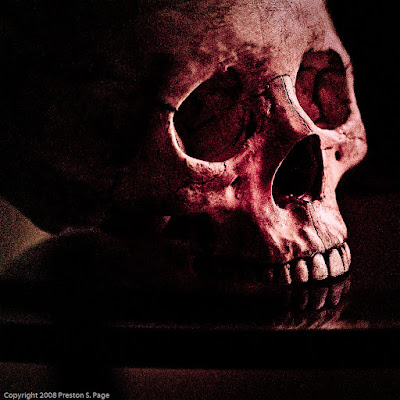A high contrast version of this picture posted earlier as Infrared Tree Abstract #1. In the post, I mentioned a Photoshop tutorial on the Life Pixel web site that explains how to process digital infrared captures. The picture I posted, however, ultimately had very little to do with the tutorial. I also had a few questions about the infrared processing, so I thought I'd post the intermediate steps. This picture is a more conventional monochrome conversion with a sepia highlight/blue shadow split tone, much like a print on Ilford Multigrade FB that has been bleached in Farmer's Reducer then toned with Selenium.
Above left is the straight color shot. Center was shot using a Cokin P007 infrared filter. On the right is the output of the center image in Photoshop after applying a custom white balance and swapping the red and blue color channels.
Here is a runner up version I like quite a bit. It is based on the color corrected output, processed as a Polaroid transfer in Nik Color Efex Pro, then a split tone applied in Lightroom.
Camera: Nikon D100
Lens: AF Micro-Nikkor 105mm f2.8 D
Exposure: ISO 200, f/11.0 @ 1/2s, Cokin P007 filter
Location: Tower Grove Park, St. Louis, MO GPS
Processing: RAW file in Photoshop CS5, Lightroom 2.7 and Nik Sharpener
















